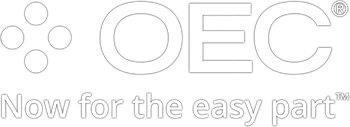Balance is a good thing. In your parts department, having a balanced approach to parts sales and management allows your team to expand its sales opportunities and grow customer relationships while avoiding an over-dependence on one source of business or a singular sales strategy. This means using different tools to achieve diverse goals that help your department reach its ultimate objective: healthy parts sales and happy customers. It starts by understanding your options for growing revenue streams and identifying the right solutions to help you capitalize on these opportunities.
Take a look at these three common phases (or opportunities) in a dealership’s parts business and how different tools can help contribute to sales and strengthen the department:
Parts Wholesale
The wholesale parts business is likely your parts department’s bread and butter service: the actual selling of collision and mechanical parts to shops and buyers. Parts go out the door and money comes back in. But it’s not just as simple as receiving a call from a shop, taking the order, and getting the part out the door and to the customer. These days, it’s about implementing the right tools to efficiently process online orders while also helping your team generate revenue. Here are a few things to consider when researching and selecting an online system to drive your wholesale program:
- Collision – Manufacturers are big believers in online collision parts sales with many implementing aggressive pricing programs that reimburse dealers for selling select Manufacturer parts, allowing the dealer to compete with the aftermarket and provide an improved experience for the buying shop. The benefits go beyond the dealership, too. The buyer, in turn, is less likely to return properly fitting, high-quality Manufacturer parts and the vehicle owner receives a quality repair and a safe vehicle that’s returned to its original condition.
- Mechanical – Providing similar benefits to collision programs, the leading Manufacturer mechanical parts programs provide a complete network of shops and dealerships, creating a large, robust parts wholesale ecosystem that connects buyers to sellers. This means the dealership not only provides a better experience for its existing customers but also expands its territory to more buyers who are already using the online marketplace.
- Retail – Selling directly to the end customer is an additional line of revenue that can create repeat business and loyal buyers at the consumer level. There are different retail solutions available for dealerships: some platforms allow your parts team to sell directly to the online buyers and others facilitate parts sales through the eBay marketplace.
Important note: While parts sales platforms do require your dealership to make an investment, the best collision
and mechanical parts sourcing solutions produce a strong return on that investment, meaning the anticipated uptick in parts sales covers the cost of the solution AND produces profits on the other side! Plus, if your Manufacturer offers a parts program that provides reimbursements on select Manufacturer parts sales, it’s an added consideration when selecting an online parts solution.
Optimization & Strategy
The keyword is right there: optimization. It’s not something the pros pass up. Why? Because it’s essentially a way to run a stronger, more strategic business. So, if you’re in the “Yes, I do want to discover new ways to improve” category, then consider adopting tools that help optimize your workflow, provide insights into how you can improve parts sales, and identify ways you can enhance your customer relationships. Here are a few types of tools and services that you can explore when you’re looking to evolve your strategy and improve performance:
- Business Intelligence – The best business intelligence (BI) platforms provide access to business insights and help improve customer relationships by allowing dealerships to proactively monitor business trends, customer behaviors, and the overall health of the parts department. These platforms give you an opportunity to adjust sales strategies based on your department’s strengths and opportunities while also functioning as a customer relationship management tool – or CRM – that allows you to work closely with your buyers to ensure their parts sourcing needs are being met by your dealership.
- Training – Professional “coaches” or parts sales experts are often available through parts sourcing programs for in-person or virtual training and can help your team implement a parts sales solution or hone existing skills with new strategies. If you bring in a wholesale expert, you can make sure everyone on your team understands the department’s tools and strategies and get everyone rowing in the same direction.
- Parts Delivery – Most dealerships have some form of parts delivery, but reliability and timeliness are often followed by a question mark. Obviously, that’s not good for business. On-demand parts delivery services are now being integrated into parts sourcing solutions, making it much easier to get parts to buyers and to provide a complete – and improved – customer experience.
Inventory
Parts managers are busy. There are parts sales to focus on. There’s inventory to maintain. There’s the parts team to oversee. On a good day, there’s time to eat lunch while sitting down (what a luxury!) and chug a whole pot of coffee – on a good day. However, the savviest parts managers add solutions to make all their tasks more manageable and the workday more efficient. The right inventory programs can lead to increased sales and a more strategic and efficient parts department. Here are a few tools to check out:
- Inventory Management – Managing a parts inventory is not easy, especially since it’s only one of the many hats a parts manager wears daily. Many parts managers add strategic solutions to their toolbox that optimize their inventory AND help achieve sales goals. The best tools for managing inventory allow your team to work more productively, identify popular parts that sell, eliminate obsolete stock, and improve turn rates.
- Supply Chain – The leading supply chain solutions allow parts departments to make inventory available to a larger dealership network and expand the sales territory. Additionally, when your parts department is part of a larger network, it can locate parts for customers while also selling to dealerships looking for specific Manufacturer parts. When you see the logic written out in plain English, it almost makes too much sense: buying and selling parts to network dealers who will also buy from you and sell parts to you.
- Idle Reduction – Idle parts are a waste of time, money, and space. They take up much-needed resources and when you do try to move them, they take up even more resources because the buyer pool is smaller. Many parts managers offload the task to a parts broker who can help match sellers with buyers in order to get those idle parts out the door, freeing up space for parts that move (i.e., the money makers).
When considering your options for growing parts sales and increasing revenue streams, take a step back and think of it this way: you’re looking for balance, meaning you’re not being overly reliant on one business segment or, as the saying goes, putting all your eggs in one basket. Not to get in the weeds or move away from the topic at hand, but consider this common refrain when it comes to investing: diversify! You want to have a wholesale tool for your collision and mechanical parts. You want to have optimization tools to grow customer relationships. Lastly, you want to have supply chain or inventory solutions in an effort to run a smarter department. When you operate a balanced parts department, you’re working to safeguard yourself (and your team) against inevitable bumps in the road or unforeseen challenges, providing a level of stability you might not have had otherwise. Plus, in normal times, all three phases work toward the greater good of the dealership and, more specifically, to the benefit of your parts department.



